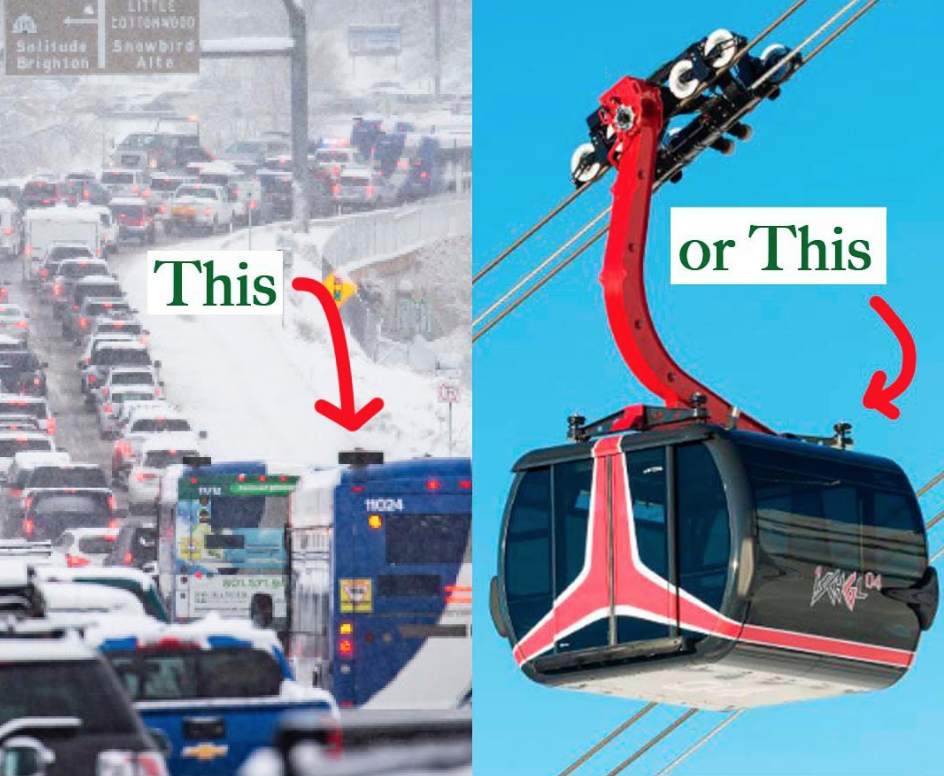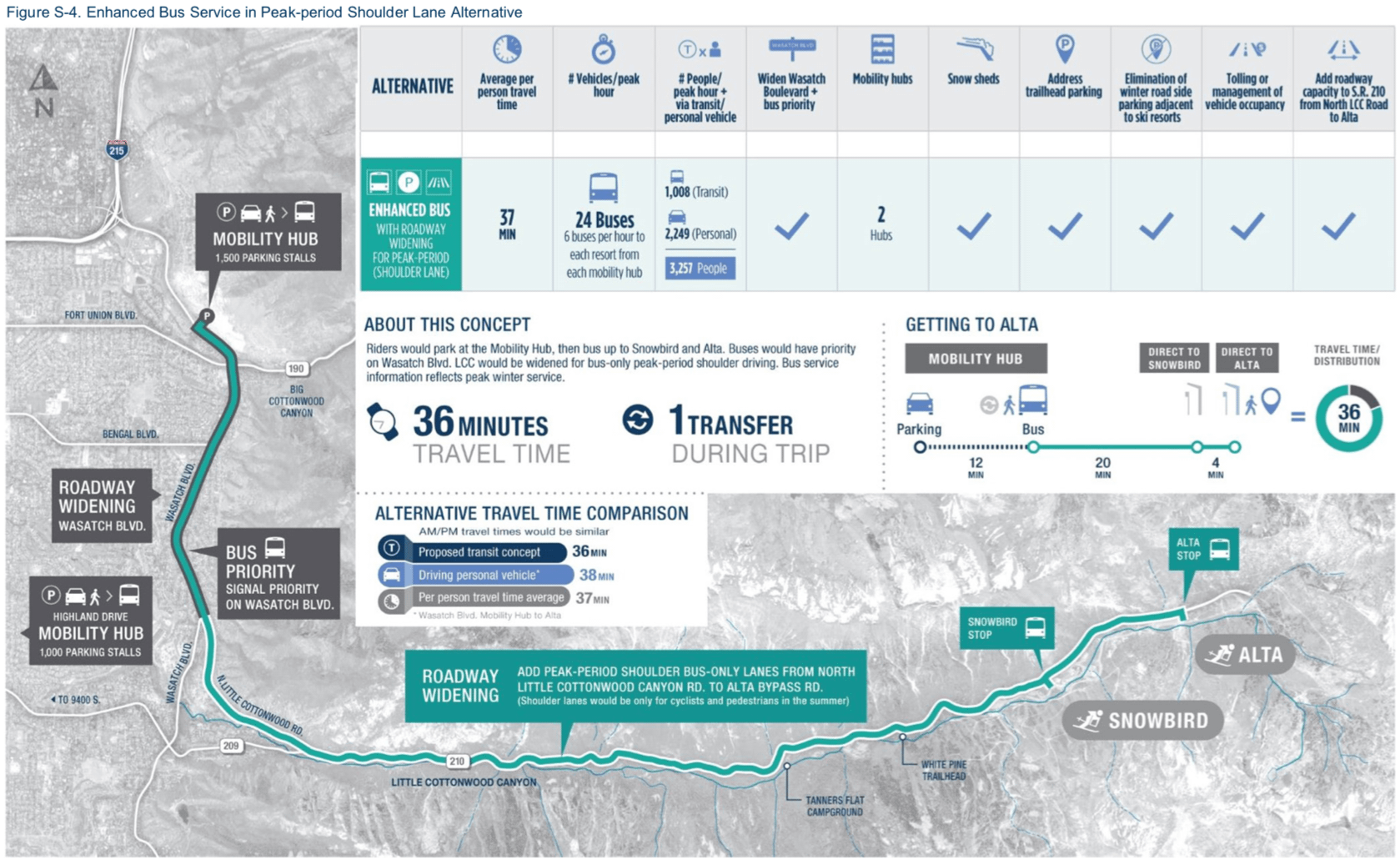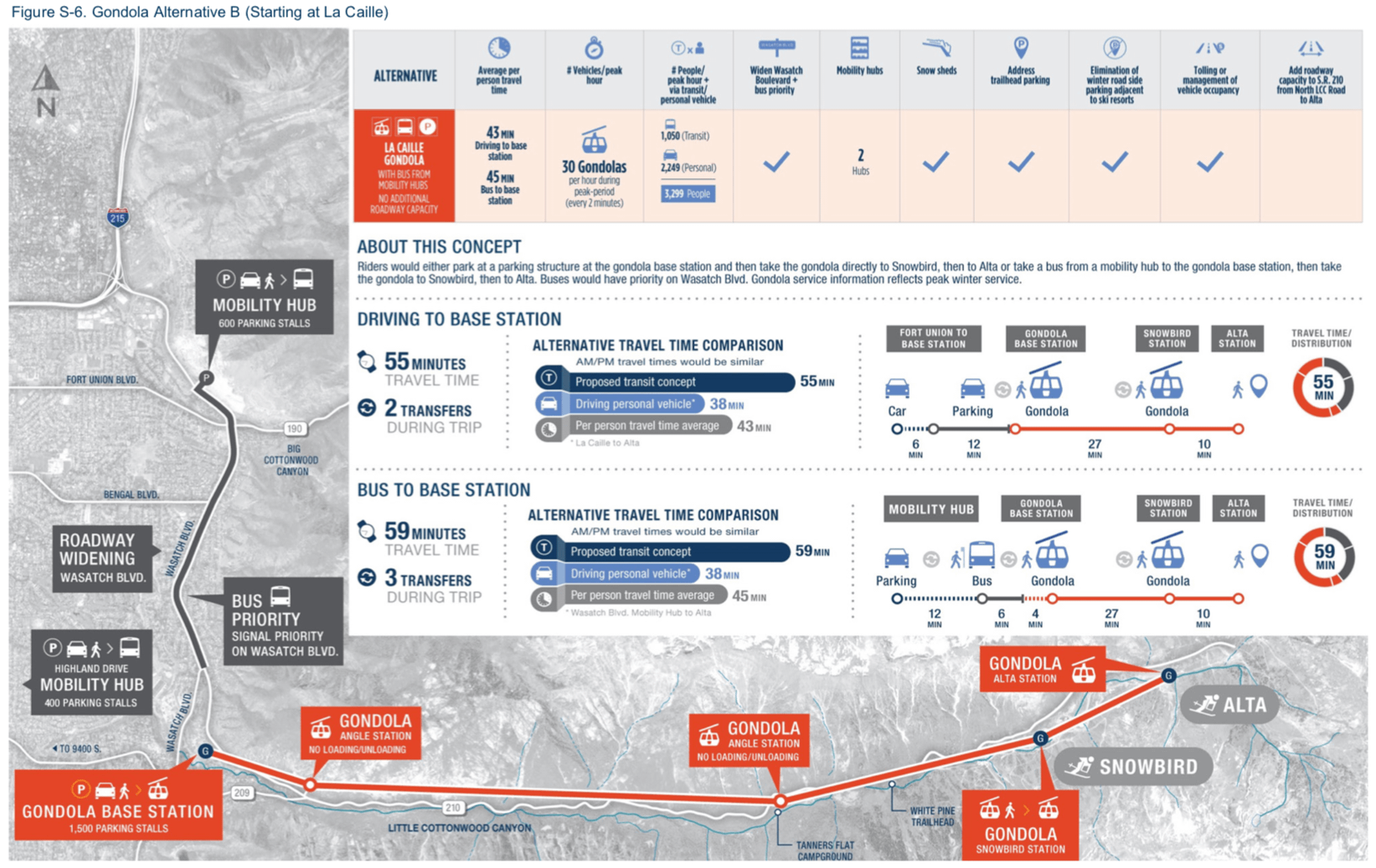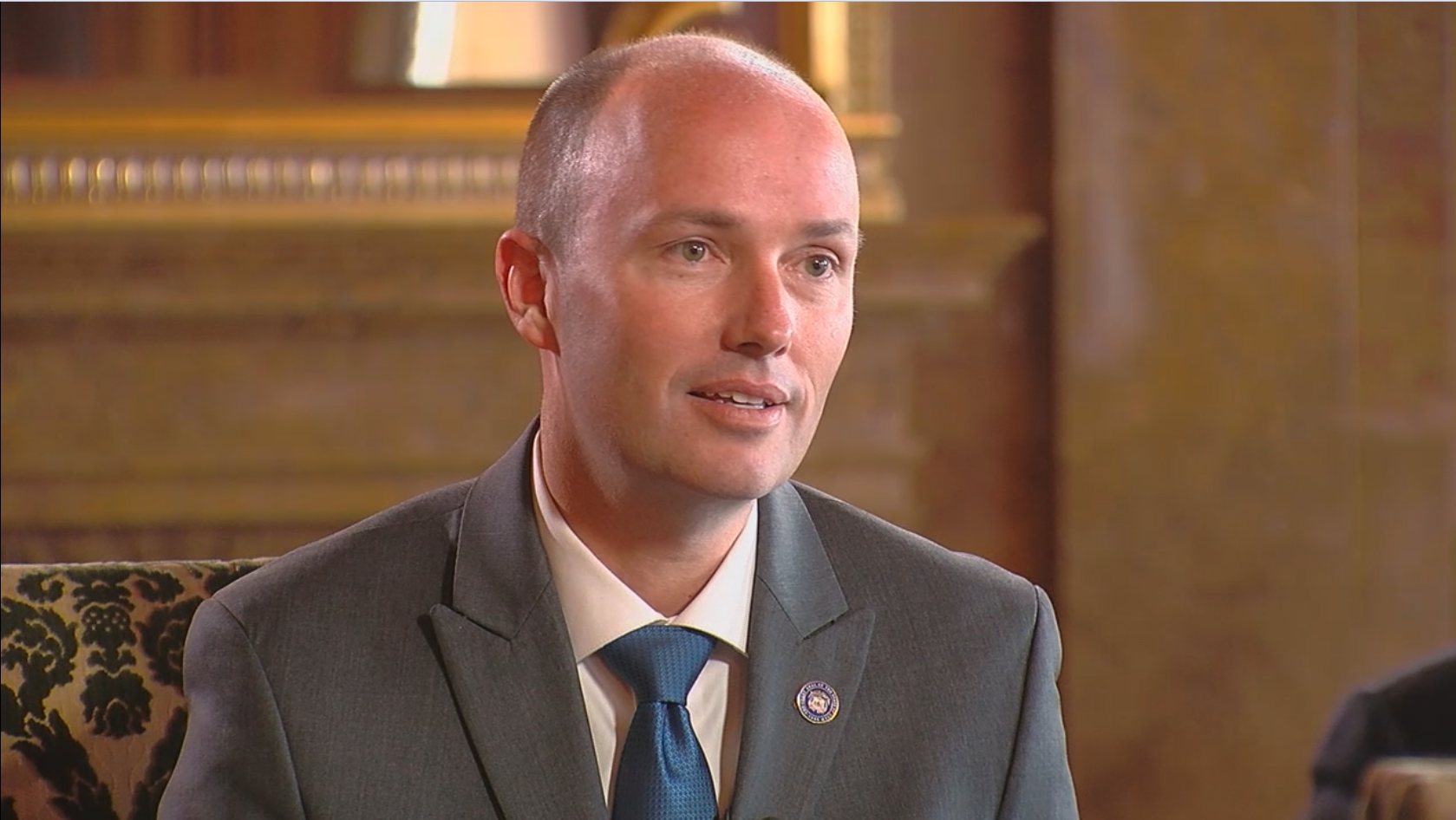
Utah Department of Transportation (UDOT) yesterday announced a delay in searching for a traffic solution in Little Cottonwood Canyon. The department had initially hoped to choose its recommendation by this month, but the record-breaking number of public comments, over 14,000, has caused the delay.
“The reason we’re extending the schedule is mainly due to the great public participation we’ve had in helping us make sure that we have an accurate and complete document.”
– Josh Van Jura, project manager, told the Deseret News
The department will now choose its “single preferred alternative” this summer, followed by a 30-day public review period. The final recommendation should be made by winter 2022, although that might creep into 2023.
The two options settled on by UDOT are a gondola through Little Cottonwood canyon up to Alta and Snowbird or a vastly improved bus service with a widening of the canyon road. Both options would cost more than $500-million.
UDOT has spent more than three years trying to solve the traffic problems in Little Cottonwood Canyon, UT, narrowing down all the alternatives from an initial 124 to five and now to their final two preferred options. On Friday 25th June 2021, they opened a 45-day public comment period, which was later extended. They also released the draft Environmental Impact Survey.
- Related: Utah Department of Transportation Offers 2 New Ways to Mitigate Traffic in Little Cottonwood Canyon
One of the two preferred alternatives is a gondola, from La Caille through Little Cottonwood Canyon to Snowbird and Alta. The video above depicts what that might look like:
Want to know what having a gondola in Little Cottonwood Canyon will be like? This video lets you experience the actual system proposed.
Beginning at the base station proposed at La Caille, the video shows the journey from the hub where gondola riders start to the top of the canyon. A gondola system would offer a never-before-experienced vantage point of the beauty of the canyon, while also preserving it for future generations.
Gondolas provide a long-term solution to challenges that have plagued the Cottonwood Canyons for decades. SR-210 – which is the only road in and out of Little Cottonwood Canyon – is the most avalanche prone highway in North America and welcomes over a million visitors year-round.
Gondolas provide secondary emergency access when that road is blocked by avalanche debris or stuck buses and cars in bad weather.
The primary purpose of the project is to significantly improve the safety, mobility, and reliability of transportation to Snowbird and Alta, up US Highway 210, Little Cottonwood Canyon.
Of the five shortlisted alternatives, two stood out above the rest. They are:
- The Enhanced Bus Service in Peak-Period Shoulder Lane, with a rider time of 36 minutes.
- Gondola B, with a base station at the mouth of Little Cottonwood Canyon near La Caille.

For those concerned about the comparative costs of each project, the gondola would cost more initially but would cost less than the bus service to operate. Thus, both options would cost taxpayers the same amount over thirty years.

In 2020, the Utah Department of Transportation announced three possible strategies to help reduce traffic in Little Cottonwood Canyon (US Highway 210): a cog railway or a gondola to shuttle visitors to ski resorts Alta and Snowbird, or a new and improved bus system to shuttle more skiers up the canyon.
And out of the three proposed options, the gondola appeals the most to Utah’s governor Spencer Cox. Deseret News reports that Cox said it would be “cheaper than the train solution, but more expensive than the bus solution.” He also said it would be more “weather immune” because heavy snowfall, as well as avalanches and avalanche control, all increase traffic in the canyon, often causing painfully long lines of skiers waiting in their cars on the gridlocked highway.
“Just the ability to move people at such a high rate of speed and get people up and down very quickly—it’s much more efficient than the bus system would be,” Cox said to an interviewer with Deseret News. “And it also has the support of the partners and the ski resorts. There’s a willingness there for them to participate on the private side to reduce the cost to taxpayers, so there’s an opportunity to bring those costs down as they pay for some of that as well.”

Gov. Cox also thinks a gondola would benefit canyon recreation in the summer along with the winter because it could become a “tourist attraction in and of itself.” Apparently, he is leaning in the direction of a canyon gondola at this time but is still a ways away from making a final—costly—decision.
Although Cox favors improving transportation up the canyon with the gondola, not everyone is so convinced that any of the three proposals have the canyon’s best interest in mind. According to the Deseret News, all options were immediately denounced by conservation organizations and backcountry enthusiasts who say “they are an attempt to turn the canyon into an amusement park.”
The Wasatch Backcountry Alliance—a recognized voice for the backcountry community involved in human-powered winter recreation in the Central Wasatch Mountains—wrote the following in a Facebook post concerning the Utah Department of Transportation’s 2020 announcement to improve canyon travel:
“The Wasatch Backcountry Alliance is concerned the shiny appeal of an expensive train or gondola system may distract us from our goals or actually make things worse,” Brad Rutledge said, co-founder of the organization and current board member. “These solutions not only miss the target on making things better, but the train and gondola concepts threaten many of the things that make the Wasatch Mountains so amazing today.”
The three options proposed by state officials come from more than 6,500 public comments. According to Deseret News, they will be included as alternatives as part of the Little Cottonwood Canyon draft environmental impact statement.
If Gov. Cox approves the gondola, it would have a base station in Sandy, where visitors would park in a proposed 1,500-space structure on the west side of North Little Cottonwood Road at La Caille. Then, the gondola would allow direct transportation eight miles up the canyon to Alta and Snowbird and take an estimated 30-40 minutes to get there.
But if legislators decided to go with the cog rail, it would start from the same Sandy base station as the proposed gondola and parking structure. It would include a diesel-powered train with a cogwheel on a track underneath, giving direct service to Alta and Snowbird.
And if they decided on buses, there would be 24 buses going up to the resort at six buses per hour.
All options raise environmental concerns for the canyon’s watershed. Canyon enthusiasts such as the Wasatch Backcountry Alliance and Save Our Canyons say that these options will bring too many visitors to the already popular Little Cottonwood Canyon and ruin it. On the other hand, Gov. Cox believes it would help drive tourism and economic gain for the state of Utah.

There were no cog trains in the 1800s, but the Aiguille du midi cable car was conceived in the early 1900s and constructed in 1955 in France. For what reason can’t parking garages in the west desert and airport be connected to the base station of a hyper loop or numerous hyper tunnels by bullet trains? In the future, everything would move at a very high rate. Hire some Genius consultants and come up with something worthy, futuristic, and expensive with minimal harm to the canyons at the base of the canyons to keep the masses out of the neighborhoods at the base of the canyons. In Provo Canyon, Utah, how many times has the Bridle Vail Falls tram been wrecked by Avalanches? No matter how many safety measures you put in place, your Gondola is still at risk of being destroyed by an avalanche. It would, however, make for an incredible Gondola ride for the time it lasted!
Such in the box thinking for 2022 didn’t they have cog trains in the 1800s the Aiguille du midi cable car in France was first Conceived in the early 1900s and built in 1955. Why not have bullet trains from parking structures in the west desert and the airport transport people to the base station of a tunnel or multiple tunnels, a hyper loop? Everything would be super high speed,Keep the mass congestion out of the neighborhoods at the base of the canyons-hire some super smart Genius consultants and come up with something worthy and futuristic and super expensive with minimal damage to those amazing canyons. How many times did the Bridle vail falls tram in Provo canyon get destroyed by Avalanches ? I did avalanche control work in little cottonwood for 13 years I’d say your Gondola is at high risk of destruction no matter the precautions built in. (Just my opinion) it would however be an amazing Gondola ride while it lasted!
Even the stock photo that is supposed to be “pro” gondola reveals the truth- That traffic photo is taken 4 miles BEFORE the tram would even load. So you’ll have this existing traffic still, plus the untold masses coming in to see Ski Utah’s new Tram!